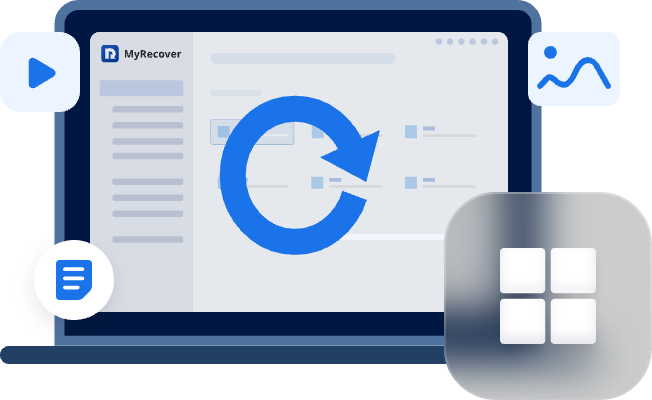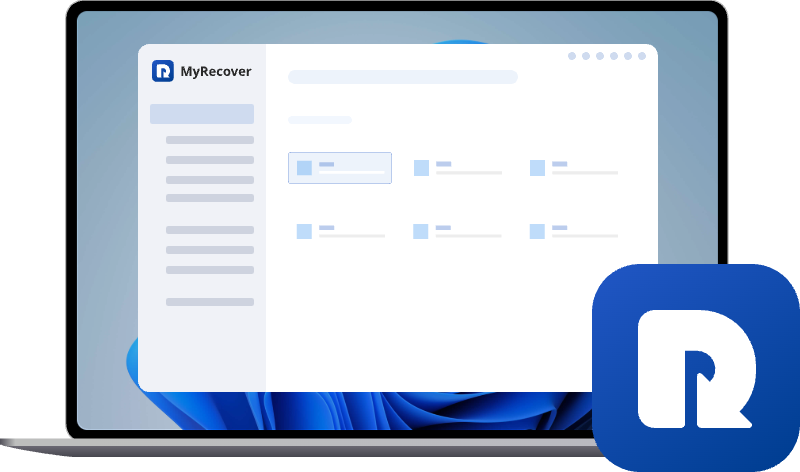How to Recover Deleted Files from Desktop on Windows [Free Methods]
Accidentally deleted an important file while tidying up your Desktop? If you're searching for methods on how to recover deleted files from Desktop, this article provides a detailed, step-by-step guide to assist you in retrieving those lost files.
Where do the Files Deleted from the Desktop Go?
Have you ever experienced the heart-stopping moment when you accidentally delete an important file from your Windows Desktop? The panic that sets in as you desperately wonder -how to recover deleted files from desktop is all too familiar. Before solving this problem, understanding where the files deleted from the Desktop have gone plays an important role in choosing which method to recover files.
When you delete a file from the Desktop, the file's fate depends on how you deleted the file.
- Temporary Deletion: If you delete files by right clicking and selecting "Delete" or pressing the "Delete" key, the file will disappear from the Desktop and go directly to the Recycle Bin.
- Permanent Deletion: If you delete files by pressing Shift + Delete, the file will bypass the Recycle Bin and disappear from the Desktop. And the operating system marks the space where the file was stored as available for new data.
How to Recover Deleted Files from Desktop on Windows
The good news is that file deletion doesn't mean immediate destruction. Temporarily deleted files can be recovered using very simple methods. Although the situation for permanently deleted files is a bit more complicated, there are still viable strategies to recover them. This section will discover free methods to recover the deleted files from Desktop, whether they're temporarily or permanently deleted.
Temporary Deletion
For all files accidentally deleted by right-clicking and selecting "Delete" or using the Delete key, they will go directly to the Recycle Bin. For those files deleted by mistake (due to a slip of the hand), the Windows system will temporarily record the file operation in a special operation stack, which can help you undo the deletion action and restore the file.
Undo the deletion (Ctrl + Z)
When you delete a file by right clicking and selecting "Delete" or pressing "delete" key, you can right click the blank space and select "Undo Delete" to reverse the deletion in just several seconds (or you can press hotkey Ctrl+Z).
Restore from the Recycle Bin
Files that are temporarily deleted will go directly to the Recycle Bin, so restoring files from the Recycle Bin is a very simple and effective method.
Step 1. Double click the Recycle Bin icon and select the files you want to restore.
Step 2. Right click and choose "Restore", then the file will restore to its original location.
Permanent Deletion (Files not in Recycle Bin)
Files permanently deleted by pressing Shift + Delete will not appear in the Recycle Bin, so the above two methods will no longer work. It is still possible to recover permanently deleted files. If you had already enabled the built-in backup tool in Windows before the file was lost, this will greatly increase the likelihood of successful file recovery. If there is no file backup, professional data recovery software will definitely be able to provide assistance.
With Backup
When accidents happen, backups become your safety net. Windows provides multiple built-in recovery options to retrieve permanently deleted files. If you have enabled the built-in backup tool in Windows, these four methods can help you recover the data deleted from the desktop.
|
Suitable Scenario |
Recommended Method |
| Enabled System Protection and created System Restore Point | Restore Previous Versions |
| Enabled File History feature | Restore your Files with File History |
| Set up backup | Backup and Restore (Windows 7) |
| Backed up in backup tool | Cloud Backup |
Restore Previous Versions function in Windows is a highly effective tool for recovering permanently deleted files on Windows. It operates by leveraging System Restore points and shadow copies that Windows creates in the background.
Step 1. Double click This PC icon to open File Explorer and select the location where the deleted files were stored.
Step 2. Right click and choose "Restore previous version".
Step 3. Choose a version you want in the list of available previous versions, and click "Restore".
Then the deleted files will be restored to original folder.
Restore your Files with File History
If you have enabled the File History feature before the file is permanently deleted, you can easily recover the deleted file through this feature.
Step 1. Enter "restore your files with File History" in the start menu and open it.
Step 2. Choose a past version that have been backed up and navigate to Desktop folder.
Step 3. Click the green restore button to recover deleted files.
Backup and Restore (Windows 7)
Backup and Restore (Windows 7) involves duplicating data and applications onto a secondary device or storage location. This process creates safeguard copies, which can be used to retrieve lost or damaged files.
Step 1. Enter "backup settings" in the start menu and open it, then click "Go to Backup and Restore (windows 7)".
Step 2. Click "Select another backup to restore files from" and choose a created backup you want to restore from, then click "Next".
Step 3. Browse or search your backup for files you need to restore.
Step 4. Choose a location to save the restored files and click "Restore".
Step 5. When the process complete, the message "Your files have been restored" will appears on the screen and you can view the restored files.
Regularly performing backups acts as a reliable safeguard, guaranteeing that whenever data disappears from the primary storage, it can be retrieved and reinstated using the saved backup. If you have backed up these files before they are permanently deleted, then you can retrieve them using the backup tool.
Here we take OneDrive as example, when the file be deleted you can recover it from the Recycle Bin of OneDrive.
Importantly, all of the above four methods need to be enabled before the file is lost. Otherwise, they will not work at all.
Without Backup
Unfortunately, if a file has been permanently deleted and there is no backup, you can only retrieve the file through professional data recovery software. Windows File Recovery and MyRecover are recommended.
Windows File Recovery
Windows File Recovery is Microsoft's free command-line tool for recovering deleted files from NTFS, FAT, and exFAT drives. It supports deep scans for severely corrupted partitions but requires technical knowledge as it lacks a graphical interface. Best for advanced users recovering deleted files from SSDs and HDDs on Windows 10/11.
Step 1. Download and install Windows File Recovery on your computer.
Step 2. Select Windows File Recovery in the start menu and run it as administrator.
Step 3. Enter the command winfr D: E: /extensive in the opened command window (relace "D" and "E" with your actual source drive letter and destination drive letter) and press "Enter".
Step 4. Press "y" to continue the process. Once the process reaches 100%, you can check the recovered files by pressing "y".
MyRecover
MyRecover is a professional third-party data recovery software. It can recover lost data even without a backup. MyRecover uses a graphical user interface, and you can simply click on the icon to complete data recovery, which simplifies the data recovery process.
Step 1. Download and install MyRecover on your computer, and launch it.
Step 2. Select the drive where the permanently deleted files was stored and click "Scan".
Step 3. Choose the files that you want to recover and click "Recover".
Step 4. Choose a different location to save the recovered files.
When the message indicating successful recovery appears on the screen, you can access the recovered files in the destination folder.
How to Keep Your Desktop Files Safe
Although it is still possible to retrieve a deleted file, it will be much more difficult to do so if the file has been overwritten. Therefore, it is essential to ensure the safety of files as much as possible. The following suggestions will help you safeguard your files to the greatest extent.
👉Change your deletion habits. Avoid using Shift + Delete to delete files directly. Before deleting the contents of the Recycle Bin, carefully confirm that the files are unnecessary and that all essential backups have been made.
👉Enable the built-in backup tool in Windows. Setting up these file backup tools will reduce the risk of complete file loss. Even if files are lost, they can still be retrieved from the backup.
👉Pause and reflect carefully before deleting any files. It is advisable to make backups before deleting files. Whether it is a cloud backup tool or an external storage device, it will ensure the safety of the files.
Summary
How to recover deleted files from desktop on Windows? The above methods are worth taking a try. If you don't want to spend time deciding which tool to use, MyRecover will be your first choice. It operates without the need for a backup and is designed with user - friendliness in mind. Even computer beginners are able to use it to restore data effectively.
For more professional users, MyRrcover also offers Professional and Technician version. You can preview the file content before recovery to confirm whether it's the file you want. And you can recover data from more complex situations, such as system crashes.


